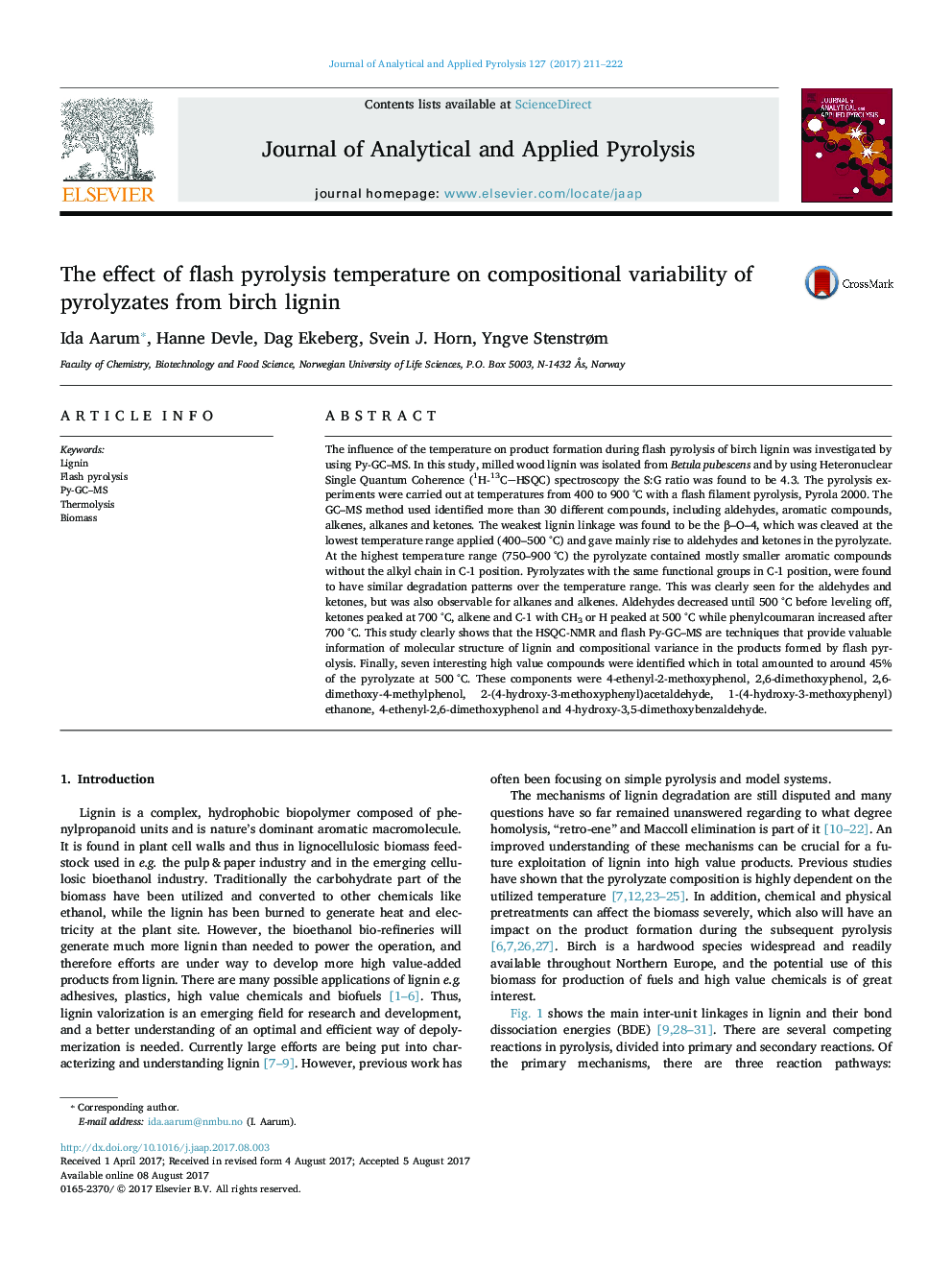| کد مقاله | کد نشریه | سال انتشار | مقاله انگلیسی | نسخه تمام متن |
|---|---|---|---|---|
| 5134436 | 1492950 | 2017 | 12 صفحه PDF | دانلود رایگان |

- Pyrolyzate from milled wood lignin (MWL) have been investigated with flash filament Py-GC-MS.
- The variation in composition under different isothermal temperatures was investigated.
- Several interesting high value compounds were found, with an optimal pyrolysis temperature.
- A correlation between functional groups and thermic degradation was observed.
The influence of the temperature on product formation during flash pyrolysis of birch lignin was investigated by using Py-GC-MS. In this study, milled wood lignin was isolated from Betula pubescens and by using Heteronuclear Single Quantum Coherence (1H-13CHSQC) spectroscopy the S:G ratio was found to be 4.3. The pyrolysis experiments were carried out at temperatures from 400 to 900 °C with a flash filament pyrolysis, Pyrola 2000. The GC-MS method used identified more than 30 different compounds, including aldehydes, aromatic compounds, alkenes, alkanes and ketones. The weakest lignin linkage was found to be the β-O-4, which was cleaved at the lowest temperature range applied (400-500 °C) and gave mainly rise to aldehydes and ketones in the pyrolyzate. At the highest temperature range (750-900 °C) the pyrolyzate contained mostly smaller aromatic compounds without the alkyl chain in C-1 position. Pyrolyzates with the same functional groups in C-1 position, were found to have similar degradation patterns over the temperature range. This was clearly seen for the aldehydes and ketones, but was also observable for alkanes and alkenes. Aldehydes decreased until 500 °C before leveling off, ketones peaked at 700 °C, alkene and C-1 with CH3 or H peaked at 500 °C while phenylcoumaran increased after 700 °C. This study clearly shows that the HSQC-NMR and flash Py-GC-MS are techniques that provide valuable information of molecular structure of lignin and compositional variance in the products formed by flash pyrolysis. Finally, seven interesting high value compounds were identified which in total amounted to around 45% of the pyrolyzate at 500 °C. These components were 4-ethenyl-2-methoxyphenol, 2,6-dimethoxyphenol, 2,6-dimethoxy-4-methylphenol, 2-(4-hydroxy-3-methoxyphenyl)acetaldehyde, 1-(4-hydroxy-3-methoxyphenyl)ethanone, 4-ethenyl-2,6-dimethoxyphenol and 4-hydroxy-3,5-dimethoxybenzaldehyde.
Journal: Journal of Analytical and Applied Pyrolysis - Volume 127, September 2017, Pages 211-222